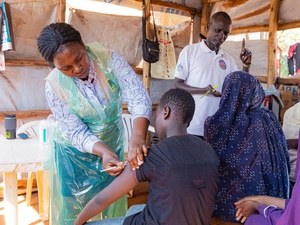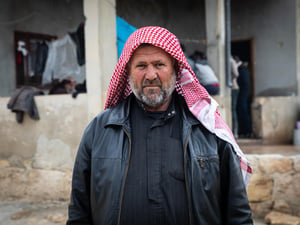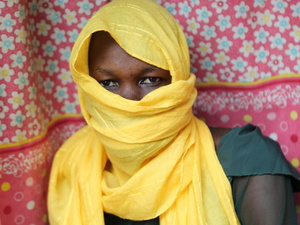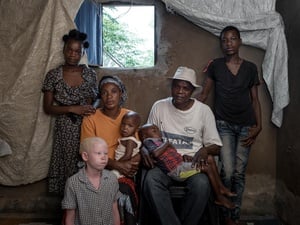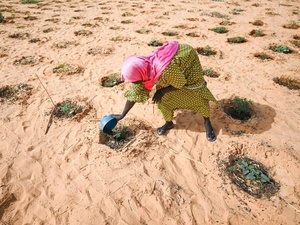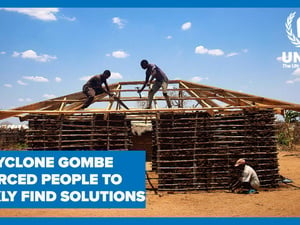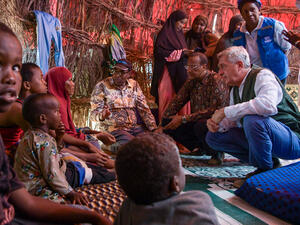2015: The year of Europe's refugee crisis

2015: The year of Europe's refugee crisis
The influx of refugees and migrants to Europe reached staggering new levels this year, dominating headlines and prompting stormy political debate. The main route shifted from the dangerous Mediterranean crossing from Libya to Italy, to what would prove to be an even deadlier crossing from Turkey to Greek islands like Lesvos. Tragedy propelled the issue to centre stage on the European agenda, and the sheer weight of numbers has kept it there for months.
As of December 7, more than 911,000 refugees and migrants had arrived on European shores since the year began and some 3,550 lives had been lost during the journey. Over 75 per cent of those arriving in Europe had fled conflict and persecution in Syria, Afghanistan or Iraq.
Here are seven key turning points in the refugee crisis of 2015:
April: Hundreds die in new Mediterranean tragedy
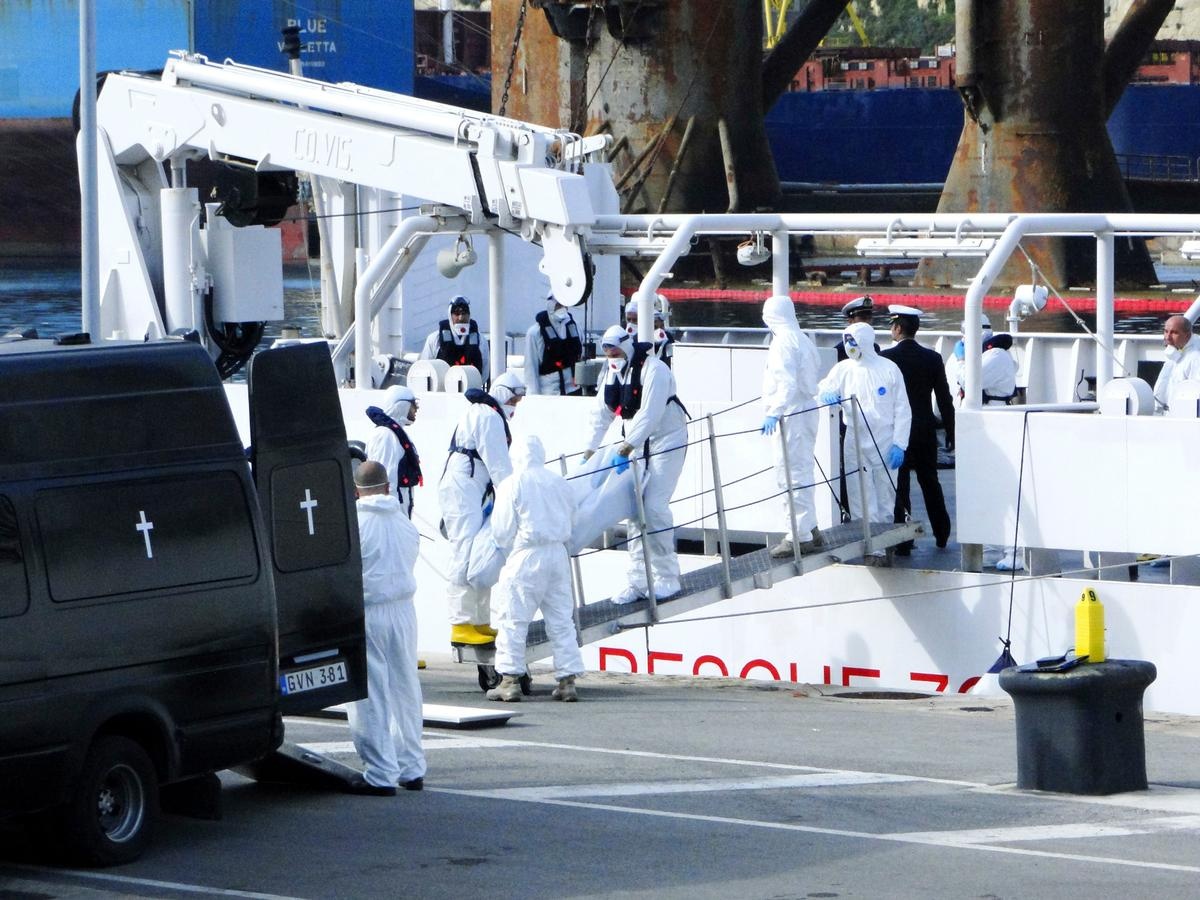
Corpses recovered after a boat capsized on the Mediterranean Sea on 19 April 2015 are unloaded from a ship at Senglea, Malta.
April 20 – Over 600 people drowned in the Mediterranean when their boat capsized shortly before midnight on April 18 in Libyan waters some 180 kilometres south of Italy's Lampedusa Island. A subsequent Italian and Maltese rescue operation ultimately could only save some 50 of an estimated 700 people on board. UN High Commissioner for Refugees António Guterres expressed his shock at this latest refugee tragedy and urged European countries to restore a "robust" rescue-at-sea operation.
August: Austria refrigeration truck deaths
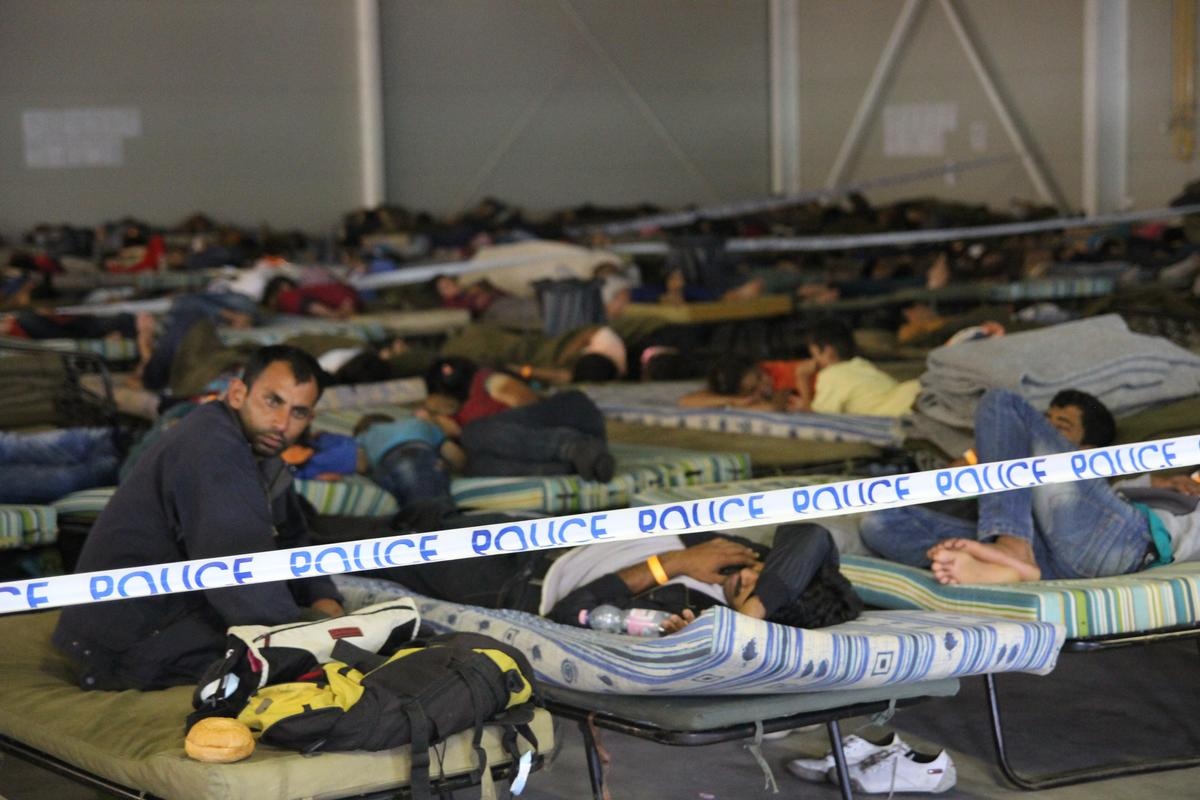
Asylum-seekers rest at Roszke police centre in Hungary after days of walking. They will later be moved to detention centres and registered by the authorities.
August 28 – Austrian authorities uncovered the bodies of 71 refugees and migrants in a refrigeration truck abandoned near the Austrian border with Hungary. Police said the truck had come from Hungary and that the victims might have been dead for one or two days. UNHCR's Melissa Fleming said the grim discovery highlighted "the desperation of people seeking protection or a new life in Europe," and urged greater cooperation among European police forces, intelligence agencies and international organizations "to crack down on the smuggling trade while putting in place measures to protect and care for victims."
September: Aylan death stirs millions
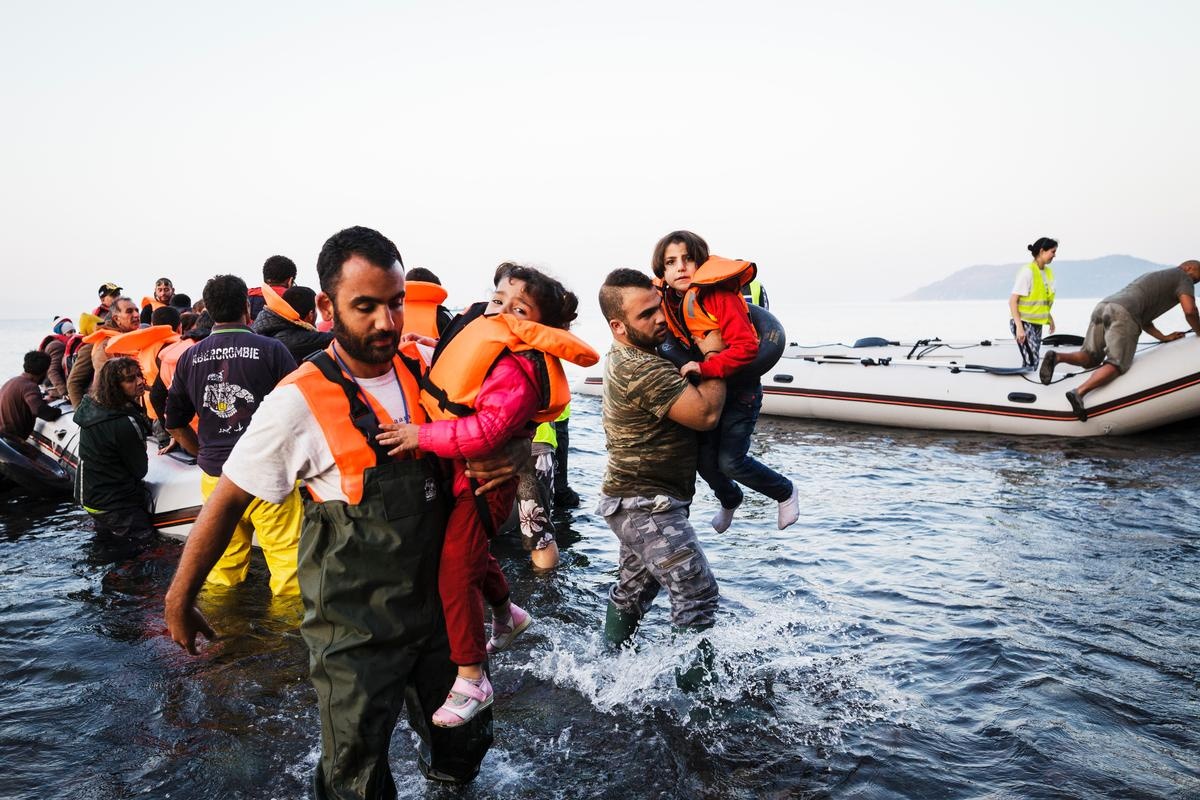
Two young girls are carried from an inflatable boat to the shores of Lesvos, Greece.
September 4 – The image of a young Syrian boy, Aylan Kurdi, whose body washed up on a Turkish beach after a failed attempt to reach Greece, moved millions worldwide and threw a fresh spotlight on the human tragedies of those trying to reach the shores of Europe. The head of the UN Refugee Agency António Guterres, emphasizing that the European Union faced a "defining moment," laid out key guidelines that he said should underpin all efforts to resolve the refugee and migration crisis facing Europe. By the time Aylan's body washed ashore, more than 300,000 people had risked their lives to reach Europe. Over 2,600 had perished in the attempt.
September: Refugees seize the day; Austria and Germany respond
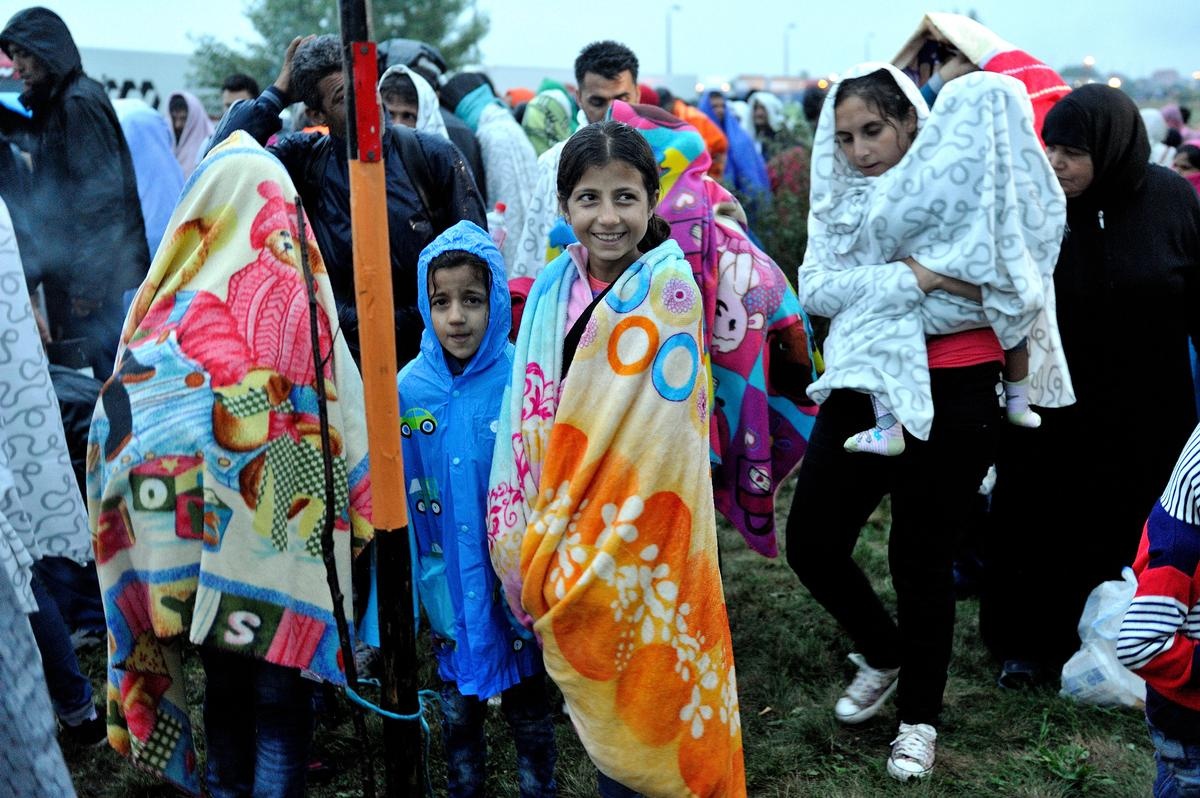
Syrian children warm themselves with colourful blankets provided by Austrian volunteers near the border with Hungary.
September 5 – More than 1,000 refugees in Hungary marched out of Budapest towards the Austrian border in protest of the Hungarian government's refusal to provide trains to Austria and Germany. That decision was reversed overnight when buses were provided by the Hungarian authorities to take the exhausted refugees to the border where they were met by volunteers from the Austrian Red Cross and the Austrian Order of Malta holding handwritten signs saying 'welcome', and handing out waterproof clothes, food, water, milk and blankets. UNHCR applauded Austria and Germany for keeping their borders open and saluted the work of civil society groups.
September: Hungary closes its border with Serbia
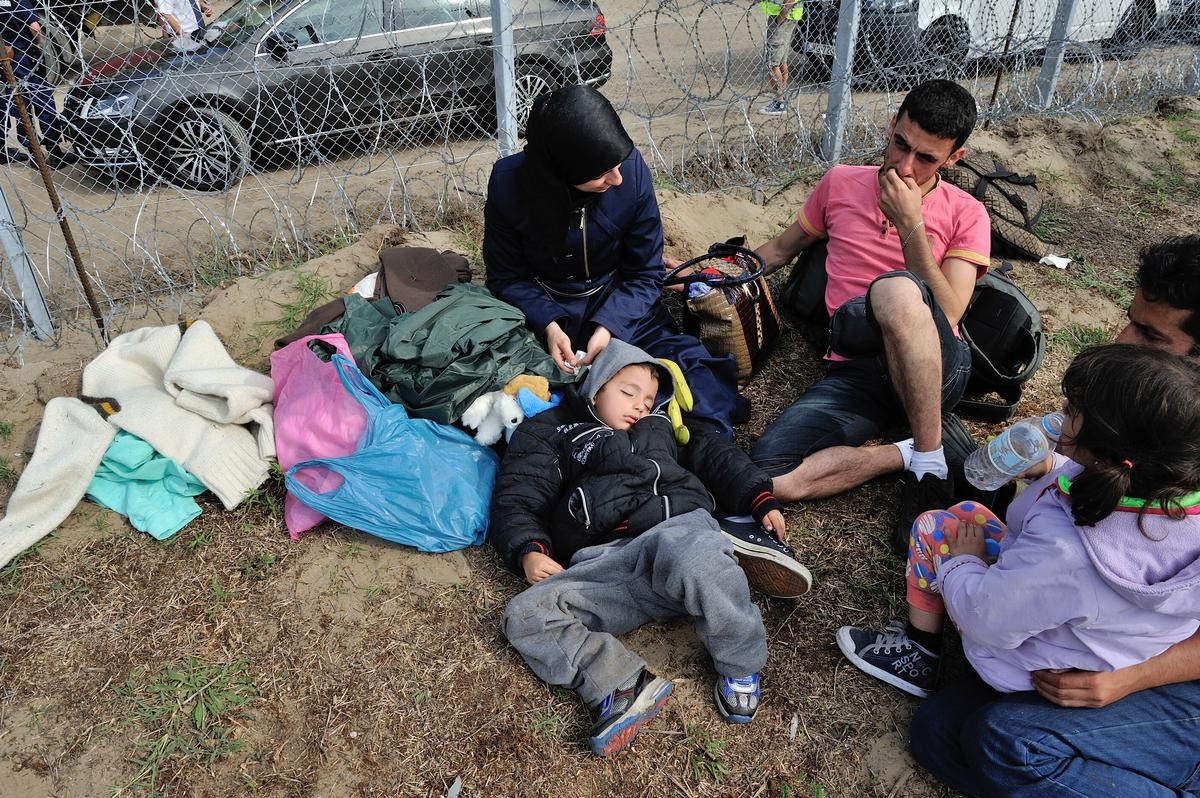
A Syrian family sits next to a fence on the Hungarian border with Serbia the morning after it was completed.
September 15 – Hungary completed a fence along its border with Serbia. With other European countries temporarily reinstating border controls, two decades of open borders in the EU ended. UNHCR, the UN Refugee Agency, warned that refugees could "find themselves moving around in legal limbo" and that different border control measures by European states "only underlines the urgency of establishing a comprehensive European response."
October: From the frying pan into the freezer
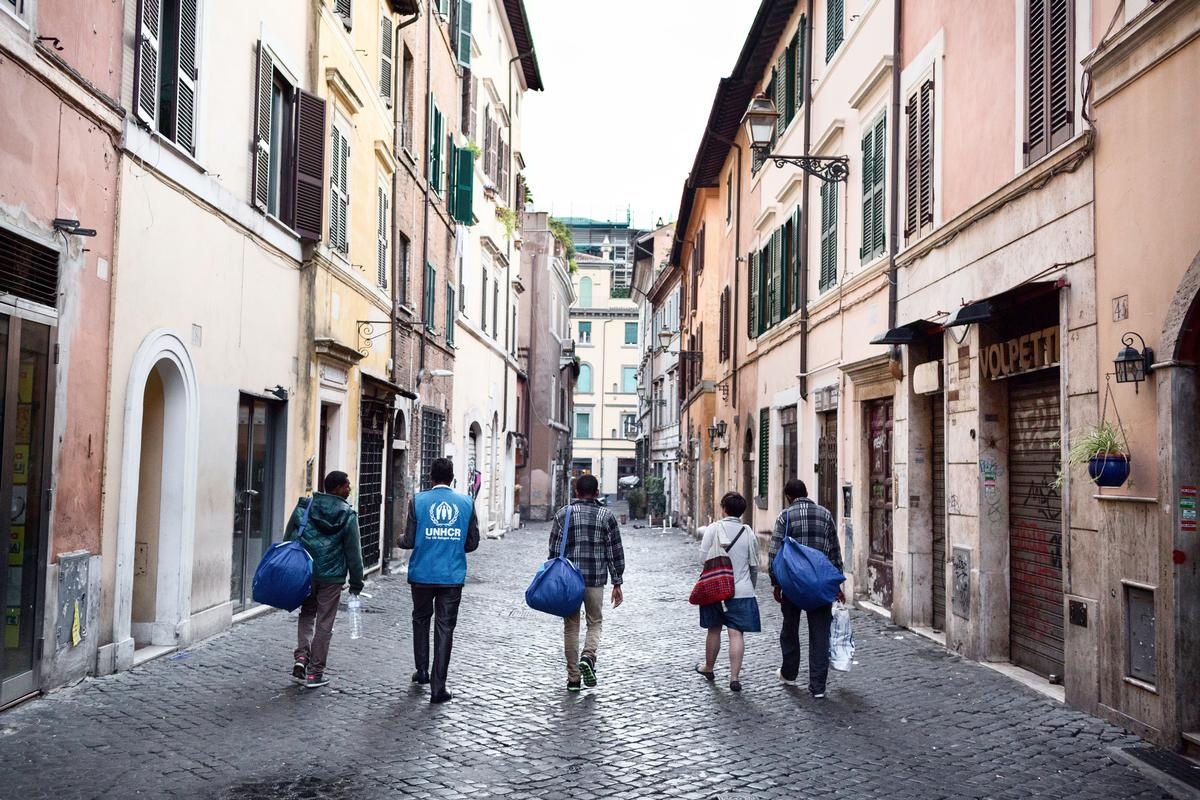
A group of refugees who will later that day leave Italy for Sweden under EU relocation scheme.
October 9 – A group of 19 asylum seekers was relocated from Italy to Sweden under a European Union relocation scheme. The scheme outlined measures to relocate 160,000 refugees from Italy and Greece and was seen as an important step toward stabilizing the refugee crisis in Europe. The 19 Eritreans were relocated to Lulea, Sweden, just south of the Polar Circle.
November: Relocations from Greece begin
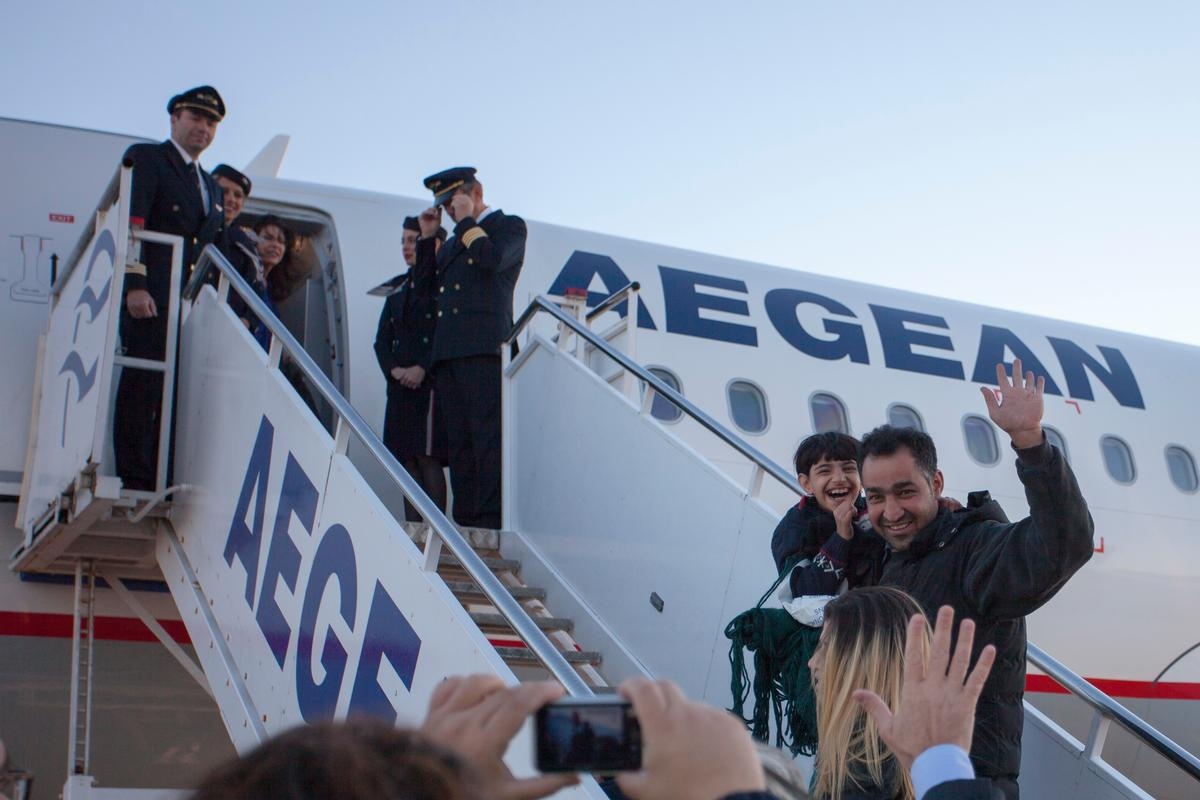
Asylum-seekers board a flight from Athens to Luxembourg under the EU relocation scheme.
November 4 – The first relocations from Greece under a European Union scheme to resettle 160,000 refugees from Europe's first ports of entry started with some 30 asylum-seekers from Syria and Iraq heading to Luxembourg. The six families, with a total of 19 children, were relocated as part of a cooperative effort led by national authorities in Greece and Luxembourg, with support from European agencies, international organizations that included UNHCR, and other partners.


